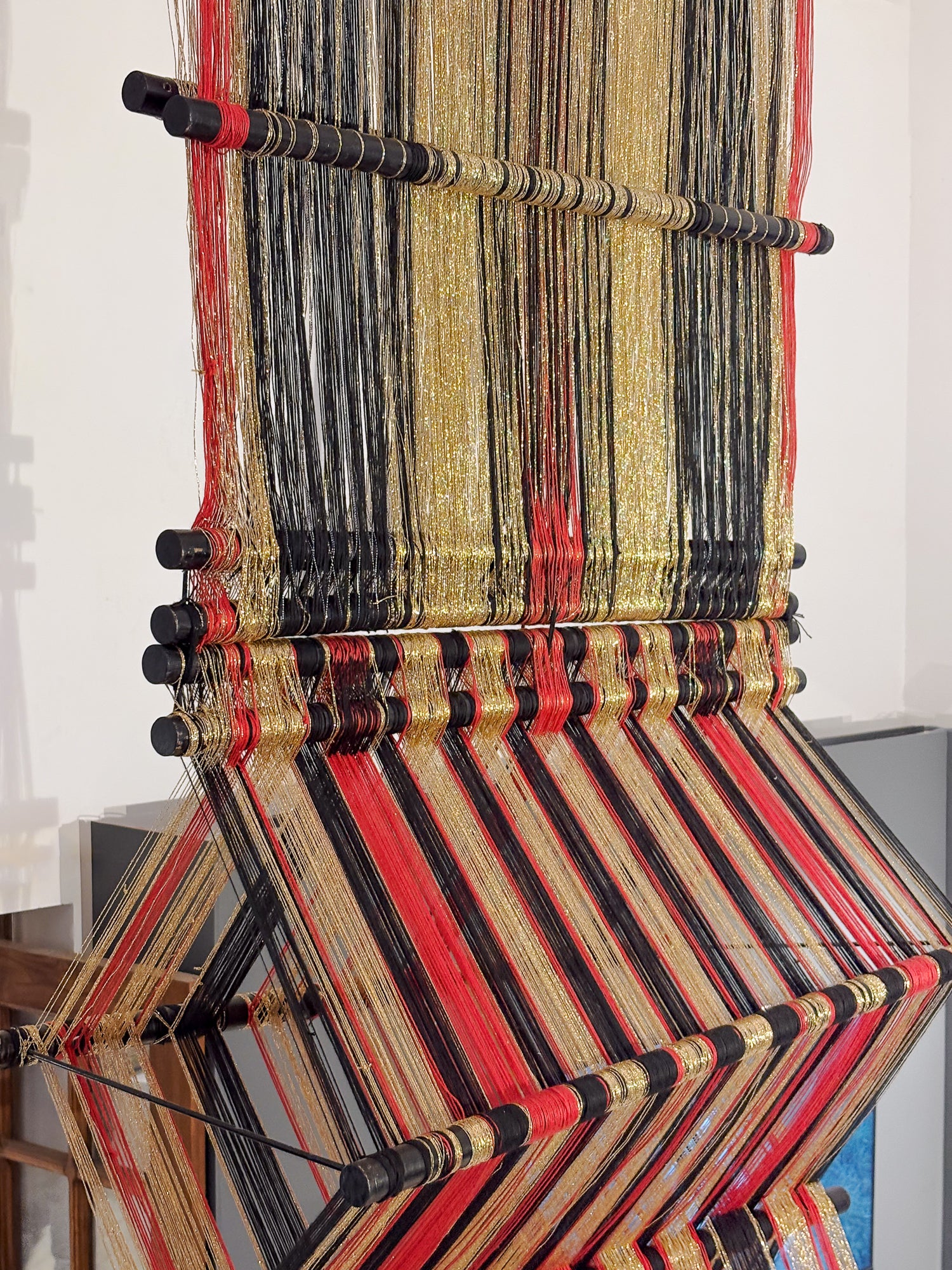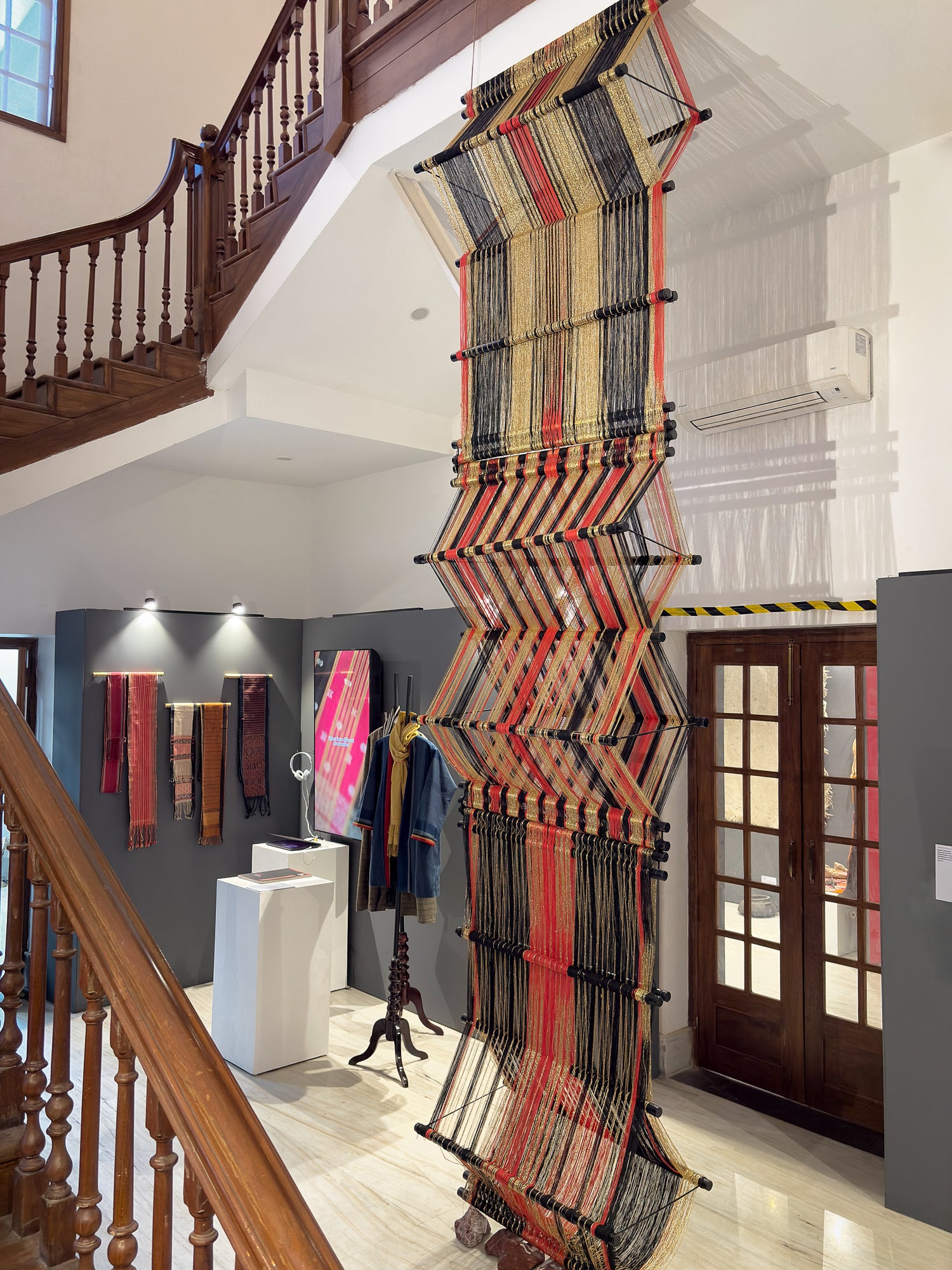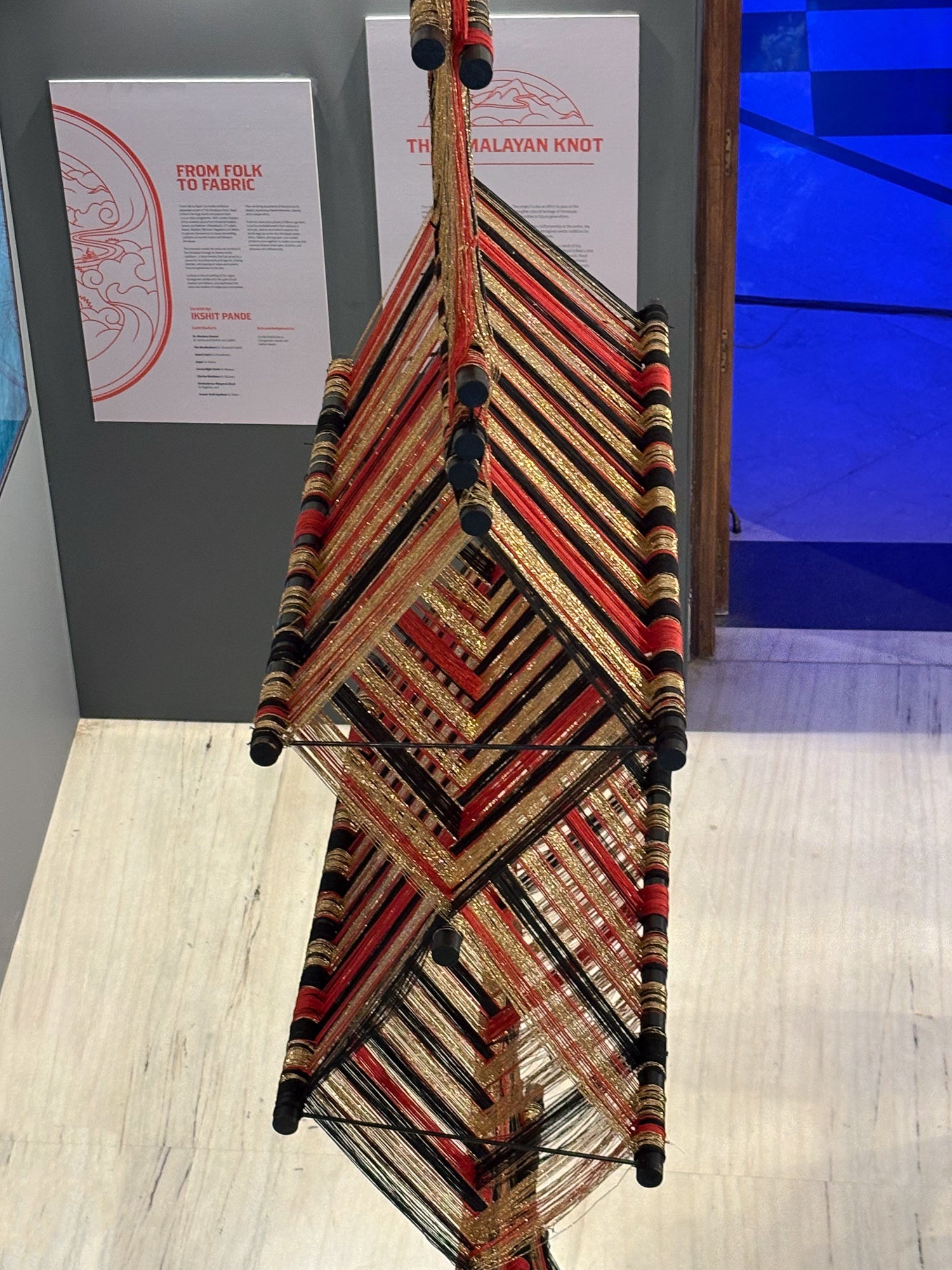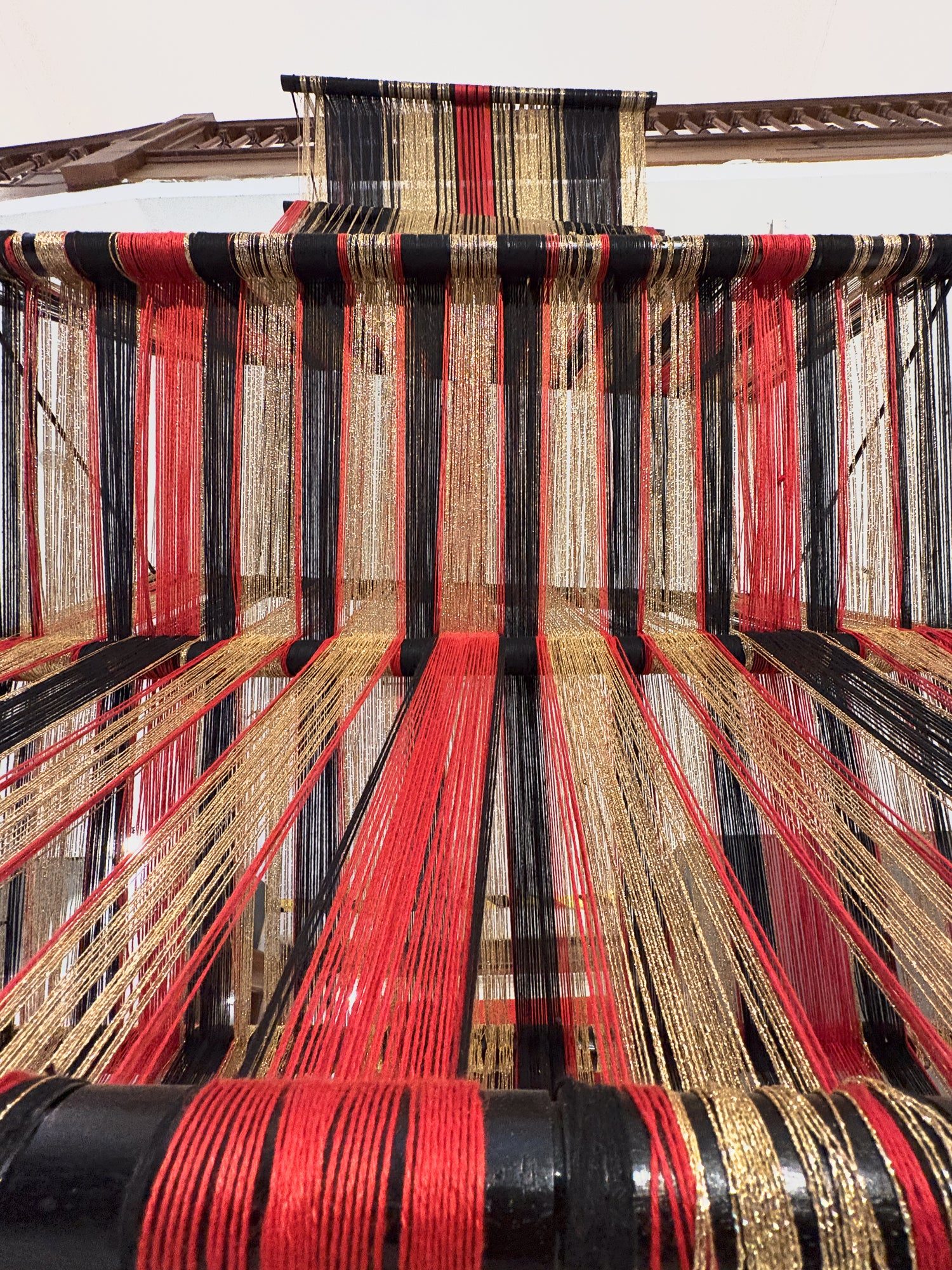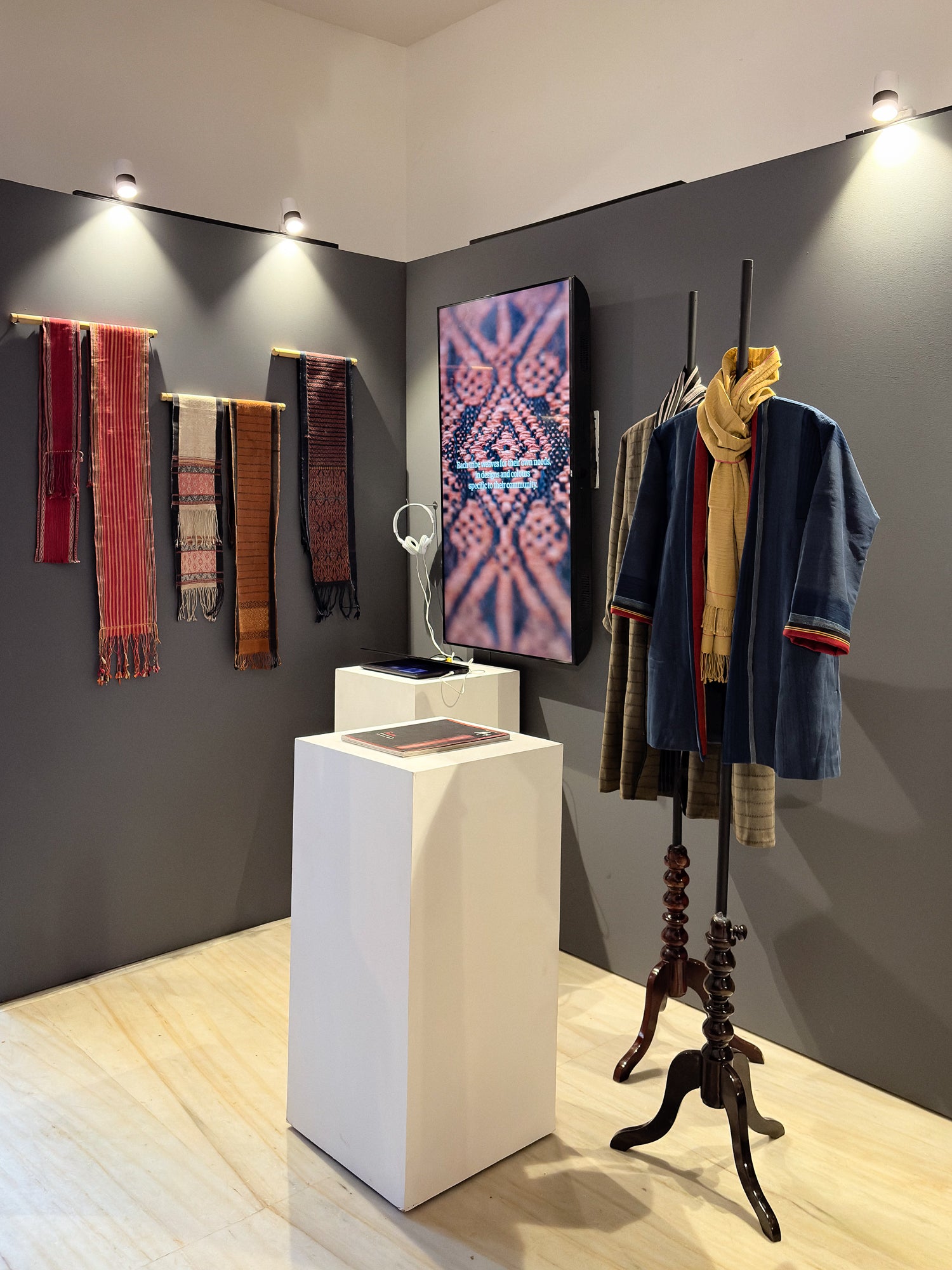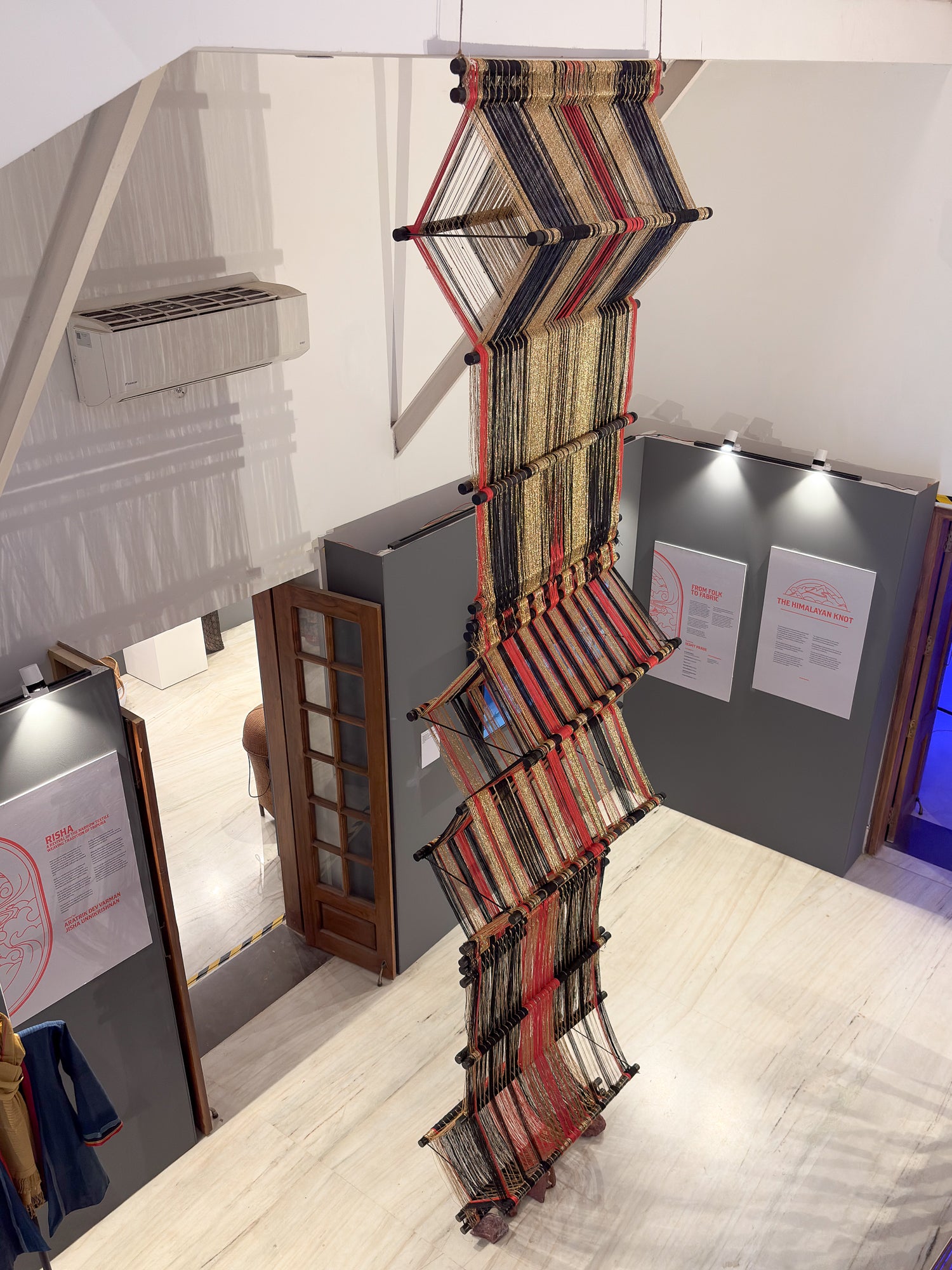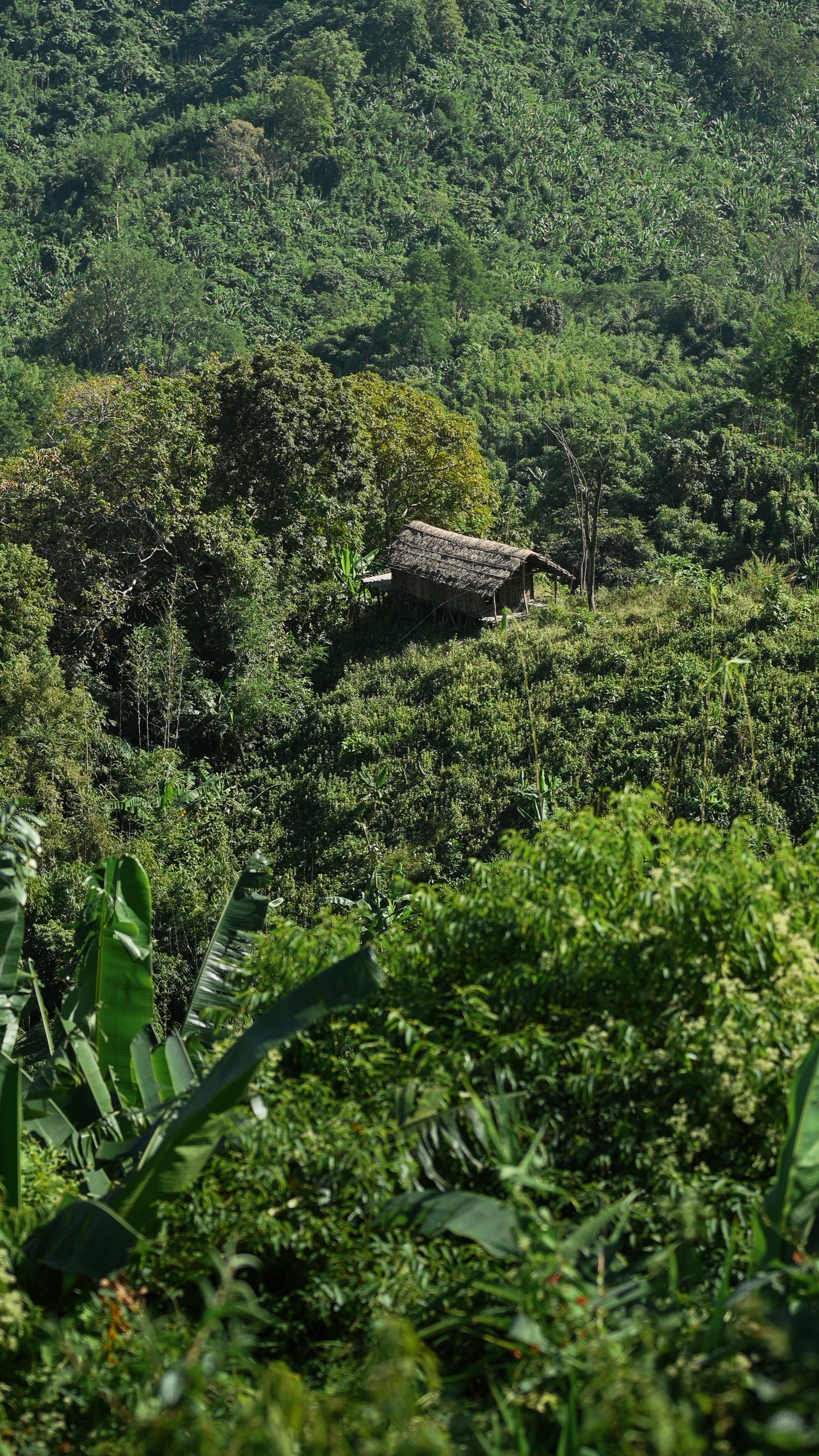Risha: Narrow Textiles of Tripura
Installation & Short Film Commissioned by Royal Enfield
Commissioned by Royal Enfield Social Mission for the Himalayan Knot exhibition at a ten-day festival, Journeying Across the Himalayas, which took place in New Delhi in 2024. The exhibiton showcased textiles from various Himalayan communities, featuring both traditional as well as contemporary works.
Inspired by the traditional breastcloth of Tripura, this hanging artwork looks at the process of Risha (breastcloth) making rather than the finished textile. It draws from the simple ingenuity of the backstrap loom in which the warp threads are set up with only a few sticks of bamboo, allowing the weaver to make this loom light, mobile, and inexpensive, an important feature in the context of shifting agriculture, where tribes from hill to hill to grow their food. Since the loom is kept in tension by a human body, the width of the textile is generally limited to approximately 20 inches giving the Risha its characteristic narrow proportion.
The multi-striped composition consists of two sets of intersecting threads, criss crossing to reveal a play of opacities in six segments and are a direct reference to the tribal textiles of Tripura.
Dimensions: 3 feet x 14.5 feet
Material: Teak wood frame with cotton and lurex yarn
Artists: Aratrik Dev Varman & Jisha Unnikrishnan
Commissioned by: Royal Enfield Social Mission / The Himalayan Knot
Year: 2024
